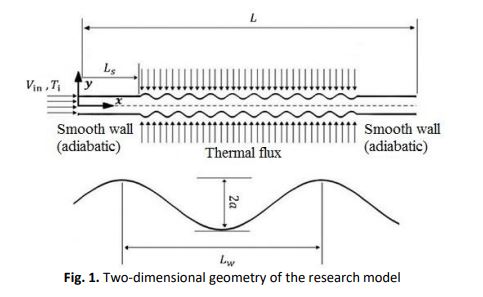Numerical Simulation of Steady and Unsteady Flow and Entropy Generation by Nanofluid within a Sinusoidal Channel
DOI:
https://doi.org/10.37934/arfmts.89.2.2542Keywords:
Nanofluid, Sinusoidal channel, Heat transfer, Entropy generation, Unsteady flowAbstract
Heat transfer has always been one of the most important aspects of human life. So far, many sources have been reported on methods of increasing the heat transfer rate. Many of these methods focus on changes in equipment structure. These techniques can hardly cope with the growing demand for heat transfer and compression in equipment. Recent advances in nanoparticle production can be seen as a breakthrough in methods of increasing heat transfer. The purpose of this study is to numerically investigate the flow field and heat transfer of water-aluminium oxide nanofluid in a wavy channel. The channel consists of two parallel plates and is divided into three parts in the longitudinal direction. The beginning and end parts of the channel are insulated and the middle part is sinusoidal and receives a uniform heat flux. The nanofluid enters the channel at a uniform speed and temperature and exits it in an expanded manner. For numerical analyses, the finite difference method based on control volume and simple algorithm is used. In this research, Reynold’s effect was analysed. The results showed that by increasing the Reynolds number, the speed, temperature gradient and heat transfer rate was increased and the thickness of the thermal boundary layer was decreased. With increasing Reynolds number, the amount of heat transfer from the wall to the fluid and also the production of entropy increases. In the unsteady state, with increasing time and flow rate, the amount of heat transfer and total entropy and temperature gradient increase to reach the steady state.
Downloads

































